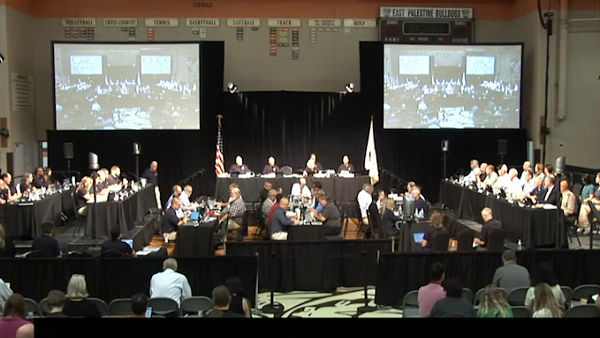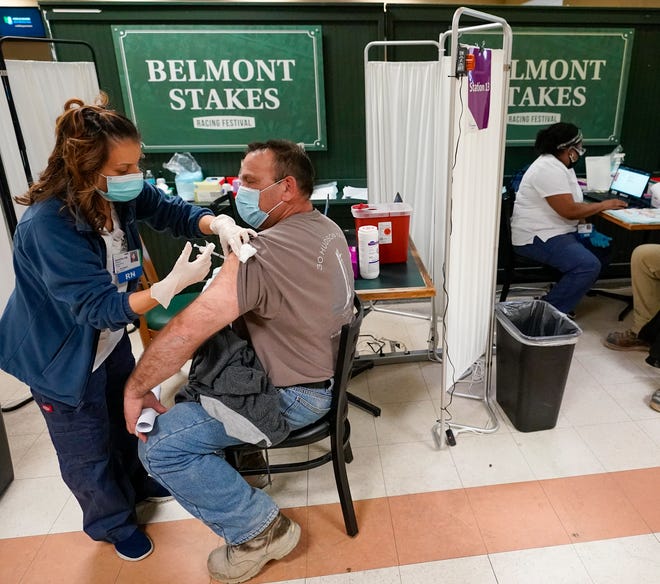

Video released Thursday by the National Transportation Safety Board shows the intense flames firefighters faced when 38 rail cars went off a track in East Palestine, a village in northeast Ohio."There was incredibly hot, active fire for several hours," said hazardous materials expert Drew McCarty.Four months after February's derailment, NTSB officials are conducting what they're calling a rare investigative field hearing.Sworn witnesses are testifying before the public. They're describing how the derailment happened and critical takeaways from the incident."Lots of lessons learned," Keith Drabick said.Drabick is the chief of East Palestine's mostly volunteer fire department. He remains concerned about conditions his fellow firefighters encountered in the wake of the train wreck — and a controlled burn that sent hazardous chemicals high into the sky."I'm concerned about not only my responders but everybody around for long-term health concerns," he said. "It's got to weigh in the back of your head for everybody."To better prepare for another possible hazmat incident, Drabick said training opportunities need to be expanded."Standards need to change in the country. Standards need to change in our village," Drabick said.In Cincinnati, training is a priority because the city is home to huge rail yards."There are a lot of people working behind the scenes, keeping our area prepared for any type of emergency that may occur," said Doug Witsken.Witsken coordinates emergency planning for Hamilton County's Emergency Management Agency. He's among those eager to learn more from the hearing in East Palestine." I expect in coming years we will get a lot more detailed information about the incident, about how it was managed, lessons learned," Witsken said.The focus of day one of the hearing in East Palestine was on the way first responders handled the derailment and how the decision to do a controlled burn was made.The second day of the hearing on Friday will center around the Norfolk Southern rail cars that crashed and the hazardous materials they carried.
Video released Thursday by the National Transportation Safety Board shows the intense flames firefighters faced when 38 rail cars went off a track in East Palestine, a village in northeast Ohio.
"There was incredibly hot, active fire for several hours," said hazardous materials expert Drew McCarty.
Four months after February's derailment, NTSB officials are conducting what they're calling a rare investigative field hearing.
Sworn witnesses are testifying before the public. They're describing how the derailment happened and critical takeaways from the incident.
"Lots of lessons learned," Keith Drabick said.
Drabick is the chief of East Palestine's mostly volunteer fire department. He remains concerned about conditions his fellow firefighters encountered in the wake of the train wreck — and a controlled burn that sent hazardous chemicals high into the sky.
"I'm concerned about not only my responders but everybody around for long-term health concerns," he said. "It's got to weigh in the back of your head for everybody."
To better prepare for another possible hazmat incident, Drabick said training opportunities need to be expanded.
"Standards need to change in the country. Standards need to change in our village," Drabick said.
In Cincinnati, training is a priority because the city is home to huge rail yards.
"There are a lot of people working behind the scenes, keeping our area prepared for any type of emergency that may occur," said Doug Witsken.
Witsken coordinates emergency planning for Hamilton County's Emergency Management Agency. He's among those eager to learn more from the hearing in East Palestine.
" I expect in coming years we will get a lot more detailed information about the incident, about how it was managed, lessons learned," Witsken said.
The focus of day one of the hearing in East Palestine was on the way first responders handled the derailment and how the decision to do a controlled burn was made.
The second day of the hearing on Friday will center around the Norfolk Southern rail cars that crashed and the hazardous materials they carried.
Source link








